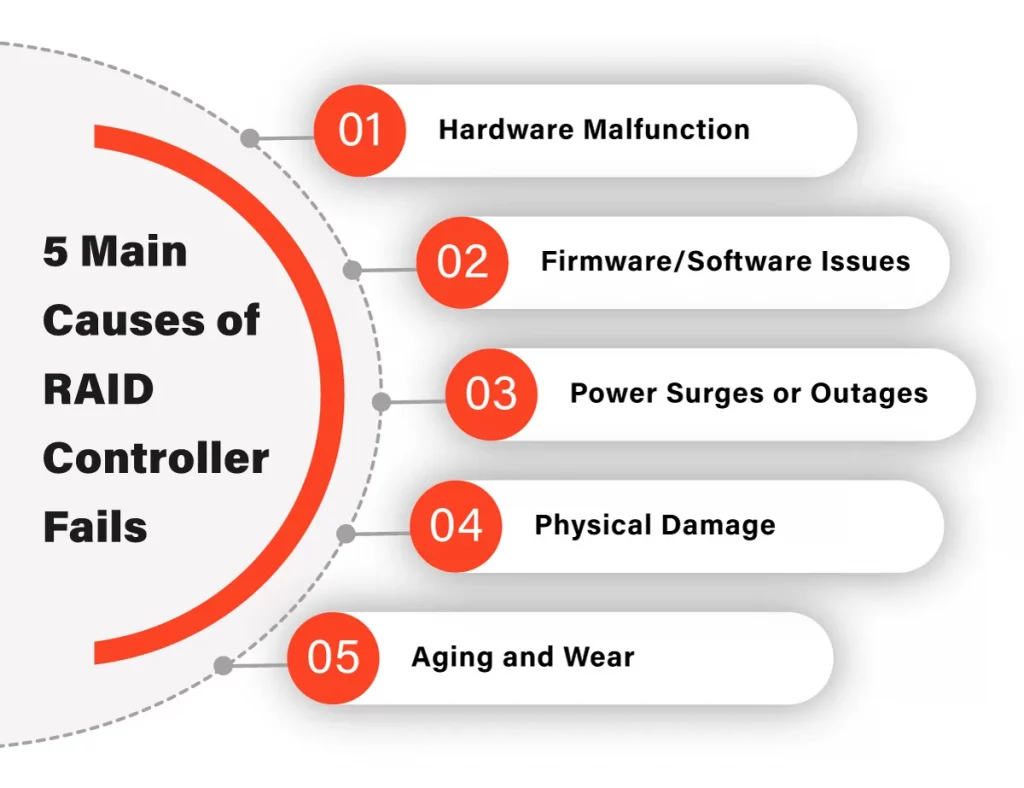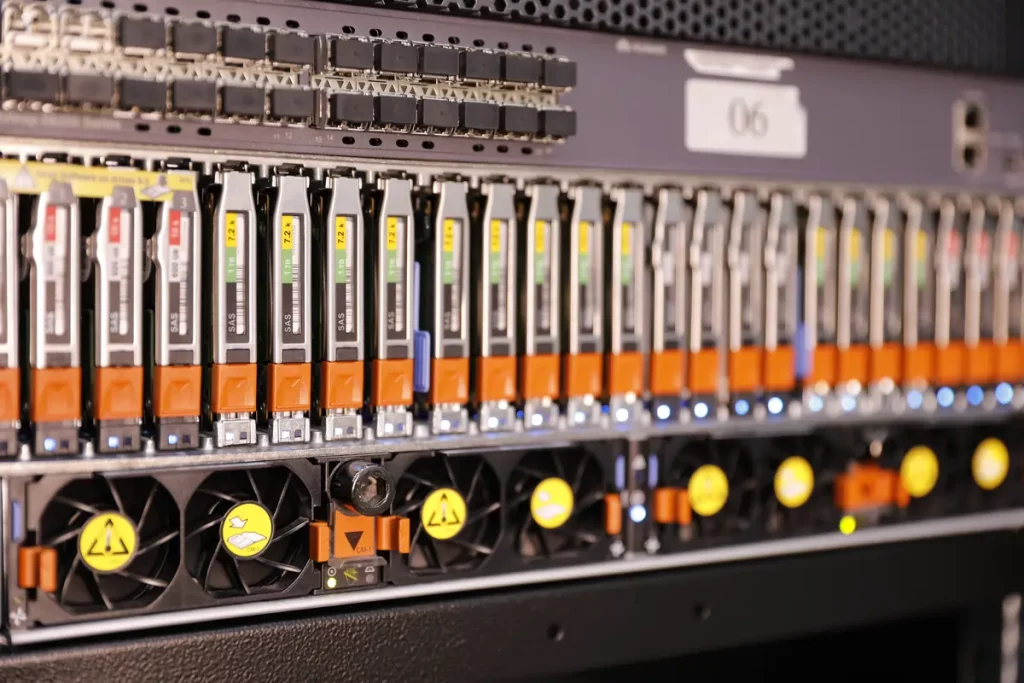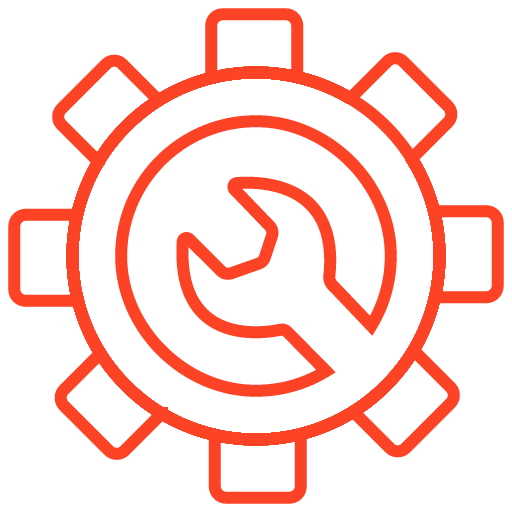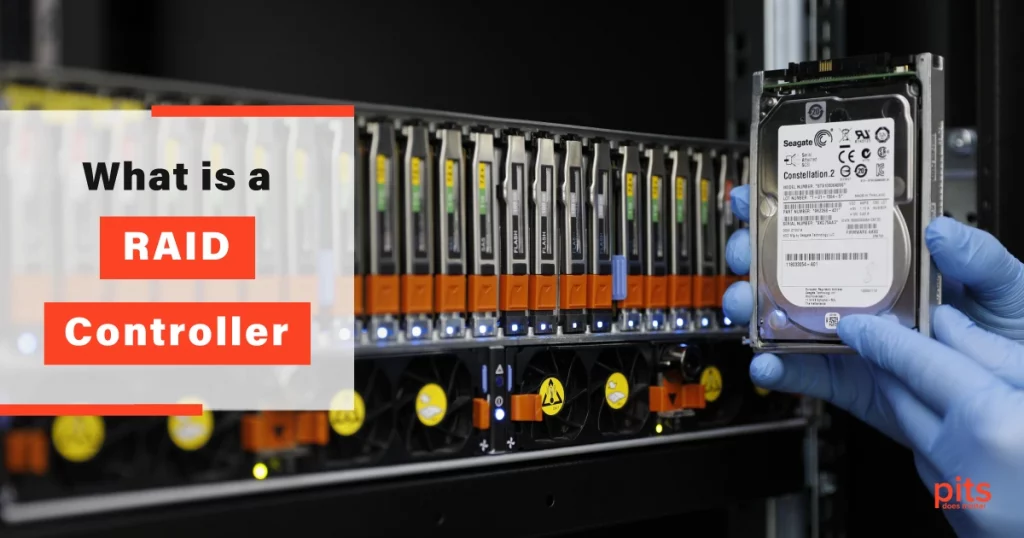In the world of data storage, RAID (Redundant Array of Independent Disks) technology is a commonly used method of increasing data reliability and performance. At the heart of a RAID system is the RAID controller, which is responsible for managing the multiple disks that make up the array. In this article, our team will discuss what a RAID controller is, how it works, and what happens if it fails.
RAID Controller Card - Definition
A RAID controller is a hardware component that manages a RAID array. It is responsible for controlling the data flow between the host system and the individual disks in the array. The RAID controller performs several key functions, including data redundancy, load balancing, and error correction.
How Does a RAID Controller Work?
A RAID controller works by distributing data across multiple disks, creating redundancy, and improving performance. When data is written to the RAID array, it is divided into blocks and distributed across the available disks. This process is known as striping. By spreading data across multiple disks, the RAID controller can improve read and write performance since data can be read from or written to multiple disks simultaneously.
In addition to striping, a RAID card also implements data redundancy.
This is typically achieved through a technique called mirroring or parity. In mirroring, data is written to two or more disks simultaneously, creating an exact copy of the data on each disk. In parity, an extra block of data is created and stored across the disks in the array, which allows the controller to rebuild lost data in the event of a disk failure.

What Happens if a RAID Controller Fails?
If a RAID controller fails, the entire RAID array may become unavailable. This can be a major problem for businesses or organizations that rely on their data for day-to-day operations. In the event of a RAID controller failure, several steps can be taken to recover the data and restore the array to full functionality.

The first step is to identify the cause of the failure. This may involve running diagnostics on the controller and the disks to determine whether the issue is with the hardware or software. Once the cause has been identified, repairing or replacing the failed component may be possible.
If the RAID controller cannot be repaired, replacing it with a new one may be necessary. This can be a complex process since the new controller must be configured to work with the existing disks in the array.
In some cases, rebuilding the RAID from scratch may be necessary, which can be time-consuming.
One potential issue that can arise during a RAID controller failure is data loss. If the controller fails during a write operation, data may be corrupted or lost. In this scenario, it may be necessary to restore data from a backup or request help from a professional data recovery company.
Benefits of Our Retrieval Services
PITS Global Data Recovery Services is a leading data recovery company specializing in retrieving data from all storage devices, including RAID arrays. In the event of a RAID controller failure, our team of experts can provide comprehensive data recovery services to get your business back up and running as quickly as possible.
Our data recovery process begins with a thorough analysis of the RAID array to determine the cause of the failure. We use state-of-the-art tools and techniques to identify the root cause of the problem, whether it is a hardware failure, software corruption, or other issues.
Once the cause of the failure has been identified, our team works quickly to create a plan for data recovery. We use a variety of techniques to recover data from the RAID array. Our experts have years of experience dealing with RAID controller failures, and we are equipped to handle even the most complex cases.
Our experts can restore data from any RAID level, regardless of the operating system, storage capacity, and number of disk drives. We also work on software- and hardware-based RAIDs.
One key advantage of working with PITS Global Data Recovery Services is our commitment to customer service. We understand that data loss can be a stressful and disruptive experience for businesses, and we are here to provide support and guidance every step of the way.

If you’re facing a data loss situation, don’t hesitate to contact us. Our 24/7 data recovery services are available to you, 365 days a year. Let us help you recover your precious data today.

We start the recovery process with a risk-free evaluation. Our technicians estimate reasons for data loss and the level of damage. Based on it, we select the most suitable recovery strategy.

With years in the data recovery industry, our company supports the highest customer satisfaction rate. We do everything to provide a positive experience for our clients.

During our remote customer file verification session, you will thoroughly review all necessary documents and records to ensure accuracy and compliance.

We offer data recovery services from over 50 locations across the US. This means that no matter where you are located, you can access our services to recover the data.

With our certified data recovery services and 99% success rate, we are confident that we can recover your precious data and get you back up and running in no time.
We understand that data is the lifeblood of your business. That is why we are committed to providing fast, reliable data recovery services that minimize downtime and ensure your business can continue operating smoothly.
Contact us today to learn more about our data recovery services for RAID controller failures and how we can help protect your business from data loss.
Frequently Asked Questions
What is a RAID controller?
A RAID controller, also known as a RAID card or RAID adapter, is a hardware device or integrated component responsible for managing and optimizing the performance and reliability of a RAID (Redundant Array of Independent Disks) storage system. It handles data distribution and redundancy across multiple hard drives to enhance data integrity and availability.
Why is a RAID controller necessary?
A RAID controller is essential to achieve data redundancy, fault tolerance, and improved storage performance. It plays a crucial role in distributing data across multiple drives (RAID arrays) and ensuring that data remains accessible even if one or more drives fail.
What are the types of RAID controllers?
RAID controllers come in two main types: hardware RAID controllers and software RAID controllers.
Hardware RAID Controller: This is a dedicated hardware card installed on the motherboard or in a PCIe slot. It offloads RAID management tasks from the CPU, providing better performance and reliability.
Software RAID Controller: This is a RAID solution managed by the operating system. While it’s cost-effective, it relies on the host CPU, which can impact overall system performance.
What are the advantages of using a hardware RAID controller?
- Improved Performance: Hardware RAID offloads processing tasks from the CPU, resulting in better overall system performance.
- Redundancy and Reliability: They provide robust data redundancy and fault tolerance through dedicated hardware components.
- Advanced Configuration Options: Hardware RAID cards often offer more RAID configuration options and features.
Can I add a RAID controller to an existing system?
Yes, you can add a RAID controller to an existing system, provided it has the necessary expansion slots (e.g., PCIe) and compatible hardware. Consult with a professional to ensure compatibility and proper installation.
